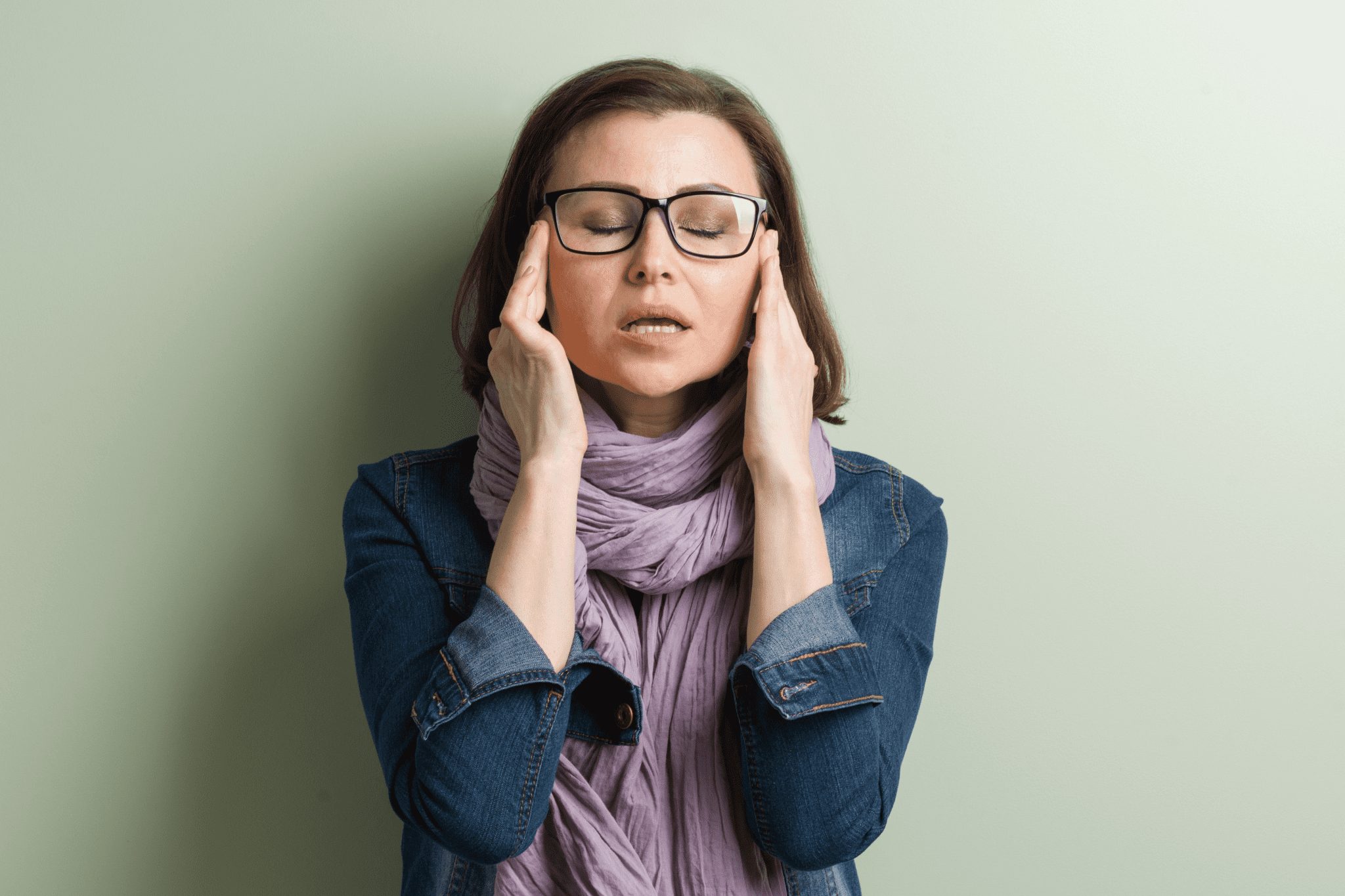
A tight, pressing pain in the head that just doesn’t seem to shift. An unrelenting throbbing sensation that makes it almost impossible to think clearly. If this sounds familiar to you, you’re not alone. Headaches and migraines are incredibly common. In fact, according to the World Health Organisation (WHO), globally, around 50% of us experience a headache disorder per year. For most, it’s a mild inconvenience, but for some, the condition can be persistent and highly debilitating. But what’s the difference between headaches and migraines and why is it important to make the distinction?
Headaches
In a nutshell, a headache is pain felt inside your head or upper neck, which develops from a mix of signals between the brain, blood vessels, muscles and nerves. There are hundreds of different types of headaches, but the main classifications are:
- Primary headaches: Occur independently, not as a result of another medical condition, and include migraine, tension and cluster types.
- Tension headaches: The most common type of headache, which affects both sides of the head and is sometimes described as feeling like a tight band around the skull. You may also experience muscle stiffness in the neck and a sense of pressure behind the eyes. Tension headaches typically last between 30 minutes and several hours.
- Cluster headaches: The pain associated with a cluster headache is usually in one side of the head, often around the eye or temple. It is characterised by bouts of frequent attacks, or clusters, which come on suddenly and follow a specific pattern of occurrence.
- Secondary headaches: Occur as a symptom of an underlining medical condition, such as neck injury, sinusitis, nerve disorders or severe high blood pressure, to name just a few examples.

Migraines
You could say that a migraine is a type of headache, however, a headache is just one of the symptoms of this complex neurological condition – the third most prevalent illness in the world. Alongside intense pain, which generally affects the forehead area and is usually on one side, you can experience nausea, sickness, diarrhoea, blurred vision, extreme fatigue and increased sensitivity to light or sound.
Migraines can be extremely incapacitating, which, undoubtedly, has a huge impact on sufferers’ day-to-day lives. It is normal for them to last between 4 and 72 hours. According to the current International Headache Society Classification of Headache Disorders, if you experience under 15 headache days per month, you are suffering from episodic migraine, while over 15 headache days signifies a chronic migraine disorder.
There are several types of migraine, including:
- Migraines with aura: A migraine aura usually precedes the migraine attack, acting as a warning sign. With the most common aura – a visual aura – you are likely to see strange shapes and effects, including coloured spots, flashes of light, stars and zig-zag lines, alongside loss of vision. Far less common is a physical aura, which can influence your other senses, possibly leading to confusion, muscle weakness, tingling in your face or hands, vertigo and speech problems.
- Migraines without aura: The most common type of migraine, which happens with no specific warning signs.
- Migraine aura without headache: Otherwise known as a silent migraine, you experience an aura but with no other symptoms, including headache.
Differentiating between headaches and migraines
Knowing the key distinctions between headaches and migraines is especially important because the right diagnosis and treatment will help to relieve pain and prevent future attacks. You might be thinking – how can I tell if I have a migraine? Distinguishing a migraine from other types of headaches can be difficult, so you should closely monitor your symptoms, particularly looking for signs of an aura. It could be helpful to keep a headache diary, for instance. If you’re having sudden, severe headaches, always speak to your GP for advice, as it may suggest a more serious condition.

What causes migraines and headaches?
Although doctors and researchers don’t fully understand what causes headaches and migraines,
some common triggers include:
- Stress or anxiety
- Hormonal changes in women, such as menstruation and pregnancy
- Lack of sleep or disturbed sleep
- Caffeine withdrawal
- Alcohol intake
- Certain foods
- Dehydration
- Allergies
- Environmental factors, such as bright light, intense scents, humidity or cold weather
- Intense physical activity
- Certain medications
While identifying and avoiding these triggers can help to prevent headaches and migraines, there may also genetic factors at play. Within epidemiological studies, there is evidence that people with family members suffering from migraines are more likely to develop migraines themselves.
Preventing and treating headaches and migraines
Headaches and migraines remain poorly understood, meaning the disorders often go undiagnosed and are significantly under-treated. Scientists, however, are working hard to improve existing therapies and provide more new, individualised treatments. There is currently no singular cure for headaches and migraines, but there are certain things you can do to relieve and prevent pain.
If you know what your triggers are, try to avoid and manage them. You can also explore various prescription and over-the-counter medications, including migraine-specific drugs. Just ensure you take them responsibly to avoid rebound or medication overuse headaches.
Needless to say, leading a healthy lifestyle by eating a balanced diet, exercising regularly, drinking lots of water and getting the right amount of rest can be immensely beneficial. For stress-induced headaches, you can try cognitive behavioural therapy (CBT), biofeedback training, massage, acupuncture and relaxation techniques such as mindfulness and meditation.

As always, we’d love to hear your thoughts and experiences on the topic of headaches and migraines. You can get in touch with the team via our Facebook community page Together For Better Days.



